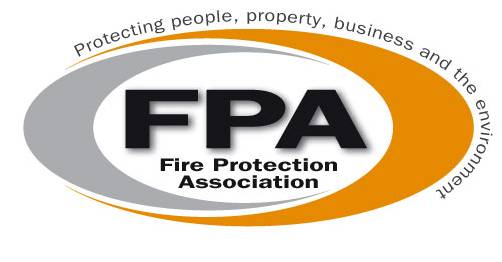Servicing of Fire Equipment
Commissioned, Labelled and Certified Fire Equipment.
Annual Service and Maintenance
Why should you service your fire extinguishers?
By law, employers must provide their staff with adequate means of tackling a fire in the workplace. Professional fire extinguisher servicing and maintenance is an essential part of fire protection and it is the legal responsibility of the employer to arrange a regular service of equipment by a qualified engineer.
How often should you service your fire extinguishers?
British Standard Code of Practice BS 5306-3:2009 states that all fire extinguishers must be serviced at least once a year by a qualified technician. In addition to this, monthly checks in the workplace should be carried out to ensure fire extinguishers are in good working order and repair between services.
What does a basic fire extinguisher service consist of?
To be carried out by a qualified technician only, a service involves the thorough checking of the fire extinguisher for corrosion and discharge either partial or complete, with reference to the manufacturer's recommendations and instructions. Any units deemed unfit for purpose should be brought to the attention of the user and removed from service.
The service in detail:
By law, employers must provide their staff with adequate means of tackling a fire in the workplace. Professional fire extinguisher servicing and maintenance is an essential part of fire protection and it is the legal responsibility of the employer to arrange a regular service of equipment by a qualified engineer.
How often should you service your fire extinguishers?
British Standard Code of Practice BS 5306-3:2009 states that all fire extinguishers must be serviced at least once a year by a qualified technician. In addition to this, monthly checks in the workplace should be carried out to ensure fire extinguishers are in good working order and repair between services.
What does a basic fire extinguisher service consist of?
To be carried out by a qualified technician only, a service involves the thorough checking of the fire extinguisher for corrosion and discharge either partial or complete, with reference to the manufacturer's recommendations and instructions. Any units deemed unfit for purpose should be brought to the attention of the user and removed from service.
The service in detail:
- We visually inspect the appliance for corrosion and damage.
- Check that the extinguisher has not been used, by ensuring the safety pin and tamper seal are in place and checking the gauge reading.
- Ensure operating instructions on the extinguisher are clear and legible.
- Remove the discharge hose and check for blockages and corrosion and replace the O ring.
- Record the weight of the extinguisher on the service label.
- If there is more than a 10% weight loss, investigate and recharge.
- Wipe down the extinguisher.
- Ensure that wall mountings are secure and in good condition before replacing the appliance back on the wall.

What does an extended fire extinguisher service consist of?
To be carried out by a qualified technician only, water, foam, powder and wet chemical extinguishers require a more detailed examination every five years, including a test discharge of the extinguisher and recharging.
The service in detail:
Due to the amount of work required on the extended service, it may be cheaper to purchase a new extinguisher.
Do you need any other equipment?
All fire extinguishers must be accompanied by an appropriate wall sign indicating the type of extinguisher and instructions on use. BS 5499: Parts 1 and 3 states that if for any reason extinguishers are placed in positions hidden from direct view their position should be indicated by suitable signs. Extinguishers should also, where possible be wall mounted on a suitable bracket or placed on a fire extinguisher stand.
What happens after the service?
A H2O Fire Protection Certificate of Maintenance is issued to customers following the completion of an annual fire extinguisher service. This shows that your company has met all relevant legal requirements, provides documentation for your insurance company in the event of a fire and gives you the confidence to know that all works have been carried out to the required British Standards.
Are you tied into a contract?
All of our contracts are one year rolling contracts - this means that you can terminate the contract at any point within the year by giving four week's written notice.
What should you do between services?
Monthly internal visual inspections should also be carried out to check for:
To be carried out by a qualified technician only, water, foam, powder and wet chemical extinguishers require a more detailed examination every five years, including a test discharge of the extinguisher and recharging.
The service in detail:
- Discharge extinguisher gas
- Carefully unscrew the headcap and check all removable parts for signs of corrosion and blockages
- Examine the extinguisher body internally for any signs of corrosion
- Rinse water based extinguishers with clean water
- Replace all O rings and hose rings
- Refill the extinguisher, refit the headcap and re-pressurise
- After a refill with generic chemicals, the extinguisher must receive a label with the new chemical specification
Due to the amount of work required on the extended service, it may be cheaper to purchase a new extinguisher.
Do you need any other equipment?
All fire extinguishers must be accompanied by an appropriate wall sign indicating the type of extinguisher and instructions on use. BS 5499: Parts 1 and 3 states that if for any reason extinguishers are placed in positions hidden from direct view their position should be indicated by suitable signs. Extinguishers should also, where possible be wall mounted on a suitable bracket or placed on a fire extinguisher stand.
What happens after the service?
A H2O Fire Protection Certificate of Maintenance is issued to customers following the completion of an annual fire extinguisher service. This shows that your company has met all relevant legal requirements, provides documentation for your insurance company in the event of a fire and gives you the confidence to know that all works have been carried out to the required British Standards.
Are you tied into a contract?
All of our contracts are one year rolling contracts - this means that you can terminate the contract at any point within the year by giving four week's written notice.
What should you do between services?
Monthly internal visual inspections should also be carried out to check for:
- Any sign of tampering, such as missing or broken tamper tags or pins
- Signs of discharge such as water, powder or foam traces on the hose or horn of the extinguisher
- Gauges showing low or high pressure
- Any damage to fire extinguishers such as rust or missing parts etc
- Any damaged extinguishers must be replaced immediately or repaired by a servicing company


